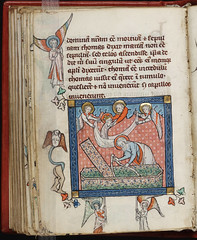What is a Primary Source?
What are primary sources? Primary sources enable the researcher to get as close as possible to what actually happened during an historical event or time period. Primary sources can be treaties, photographs, legislation, diaries, speeches, interviews, letters, manuscripts, newspaper articles, artifacts, or other materials. Depending on your field of study, a primary source might also be an original scientific experiment or anthropological fieldwork.
Primary sources are not books or journal articles that provide secondary analysis, or describe something that happened somewhere else.
Primary sources can be in any format. Primary sources might be original documents in archives, republished in a contemporary book, available online, or preserved on microfilm. The content of the material -- rather than the format -- determines whether or not it's a primary source.
Types of Primary Sources
Letters or Diaries. Learn what historical figures said, in their own words, at that particular moment in time.
Memoirs and autobiographies. These may be less reliable than diaries or letters since they are usually written long after events occurred and may be distorted by bias, dimming memory or the revised perspective that may come with hindsight. On the other hand, they are sometimes the only source for certain information.
Records of or information collected by government agencies. Many kinds of records (births, deaths, marriages; permits and licenses issued; census data; etc.) document events.
Records of other organizations. The minutes, reports, correspondence, etc. of an organization or agency serve as an ongoing record of the activity and thinking of that organization or agency.
Published materials (books, magazine and journal articles, newspaper articles). Make sure to distinguish between material written at the time of an event as a kind of report, and material written much later, as historical analysis.
Photographs, audio recordings and moving pictures or video recordings. An image can often be more revealing than a written account.
Materials that document the attitudes and popular thought of a historical time period. Public Opinion polls can document the mentality or psychology of a time, or of a group. Since these are generally very limited in availability and in what they reveal, it is also possible to use ideas and images conveyed in mass media, literature, film, popular fiction, textbooks, etc.
Research data. In some disciplines, primary sources will be anthropological field notes, the results of scientific experiments, or other scholarly activity of the time.
Artifacts of all kinds. Physical objects, buildings, furniture, tools, appliances and household items, clothing, toys are all useful sources.
Primary Sources

From the Beinecke Library:
http://bit.ly/wXXxV3
